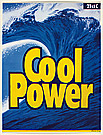MARCSTA
interview by Jaklyn Babington, January 2010
Q: Hey Marcsta! Would you like me to write about your works as MARCSTA or MARC DE JONG?
A: Either / Or.
So you don't need to maintain anonymity and a separation between the two?
A: No.
Q: You are one of the vital figures in Australian street art with your logo-jamming and ad-busting works now legendary within in the scene. Can you put a few words down on your sources, your motivations and your inspiration in creating these works?
A: The motivation is a compulsion to communicate a clear message of dissent from within the sphere of mainstream media consensus reality, using its modus operandi and language as source material without the usual salable product and bylines. This inversion co-opts the viral, parasitic method of applied conditioning to supply an alternative, critical message, by throwing a spanner in the works to target and combat what I consider as an unbearable, unsustainable terror of disorientating corporate messaging with the simple, non-violent, humorous counter-terrorism of my own. If we suppose that, as Picasso said, “Art is a lie that tells the truth”, then it follows that most advertising / marketing is just a straight up lie. The actual truth can be ugly and hurt too, especially to those most taken by, or propagating, a lie.
Q: Marcsta, can you speak a little about what your intentions are in communicating with the mass public viewing your street works?
A: To provide and provoke a conceptual jolt, a conscious awakening from within the context of a constantly mediated assault upon our environment.
To encourage people to feel that they can think for themselves and for the artwork to offer this pause for thought. To articulate and acknowledge ideas publicly with self funded expression. To show that actions are louder than words in deed. To have an active relationship with culture beyond the consumer drip-feed; to make and shake and share, not just to take.
Q: The works in the NGA collection have a very hard-hitting, anti-consumer anti-capitalist bent – Can you put down a few words about your mix of art and politics?
A: I don’t see the works solely in terms of anti-anything. Bent, yes, but rather a series of critiques, de/re-constructions, honest (re)appraisals of post-industrial consumer life. Choosing a colour can be political, but my street art aims to reveal that advertising society is political and economic imperialism, i.e. “Coke – The Real Thing®”, “Nike – Just Do It©” etc.
Q: I have been speaking to James Dodd about ‘cross-over’ tactics in moving from the streets to exhibiting in galleries. As an artist who produces work for both contexts, how do you feel about this often split practice?
A: Its more of a multi practice since I produce all sorts of work, some of which is shown by galleries, some on the street, others in more intimate environments or on the web. Context is a key to the relevance of any artwork and time, age, and place are contexts to consider when making or exhibiting work. Having lived in Melbourne CBD (1993 – 2003), street art was the priority given that I was younger and up all night in the urban thick of it. Street art’s fast too, so it made sense to create in a way suitable to the life led in such an environment. Rite now I’m a suburban hermit with a permit to slowly paint at home. The street art’s still ongoing, but more low-key.
Q: Can you talk a little about Marc de Jong (the gallery artist) and Marcsta (the street artist)?
A: They’re both me! Marcsta is simply a nickname from high school that’s stuck and its fun to write as a signature. My birth name is used by galleries to promote my work. I’m not fussed as to what people call me because a name’s less important than the actual artwork.
Q: What is it about creating works for the street, as opposed to the gallery, that keeps you inspired?
A: The ability to contribute fresh, innovative, non-commercial, mass produced and cost effective ideas via artwork into the public sector using limited personal resources.
Q: A number of your works were created for the street only. How do you feel about these essentially ephemeral works being collected by a major public institution such as the NGA?
A: Wicked! Validated! Go team Educate the Public 2010!
Q: (As I have asked James Dodd, many street artists (mostly overseas but also a few here in Australia) are now producing product (aligning themselves with the industries of fashion, merchandising, graphic design, advertising) and by doing so are creating a ‘brand’. What are your feelings about this commercial alignment?
A: Independence is essential to credible art.
Q: Can you talk a little bit about your interest in sticker production? We have a fantastic collection of your stickers in the NGA’s collection now…Everyone loves the logo-busting ones, they are hilarious.
A: Stickers are small, cheap, fast to stick up, popular and easily portable. They adhere to pretty much anything and so are poly-contextual. If you go nuts on a print run, you’ll have stock for everyone for ages. If caught by authorities putting up a sticker, you can always say that you’re a graphic design student and are collecting street art designs for next week’s cultural studies’ folio presentation and were just taking down an example to show in class if you don’t mind officer.
My ReAdvertising work, although originally done as a series of paintings on canvas in 1992 – 1995, found its feet once directly involved in mass production and dissemination.
Q: Thank you Mr Marcsta.
A: Peace.







